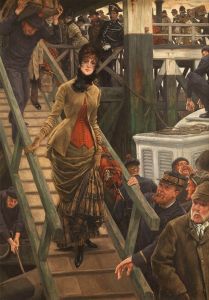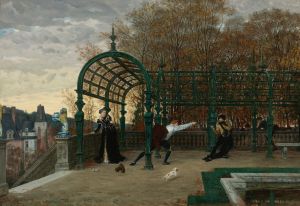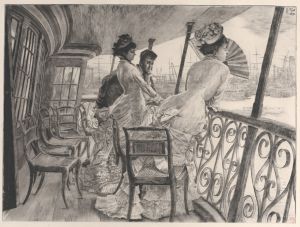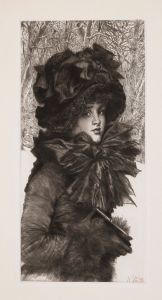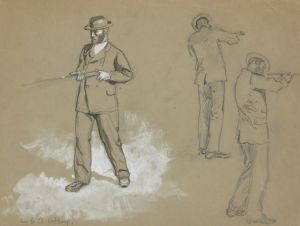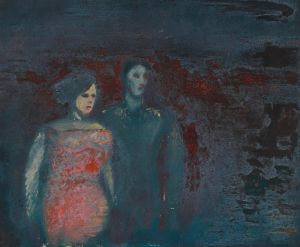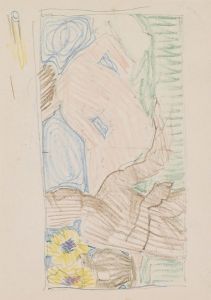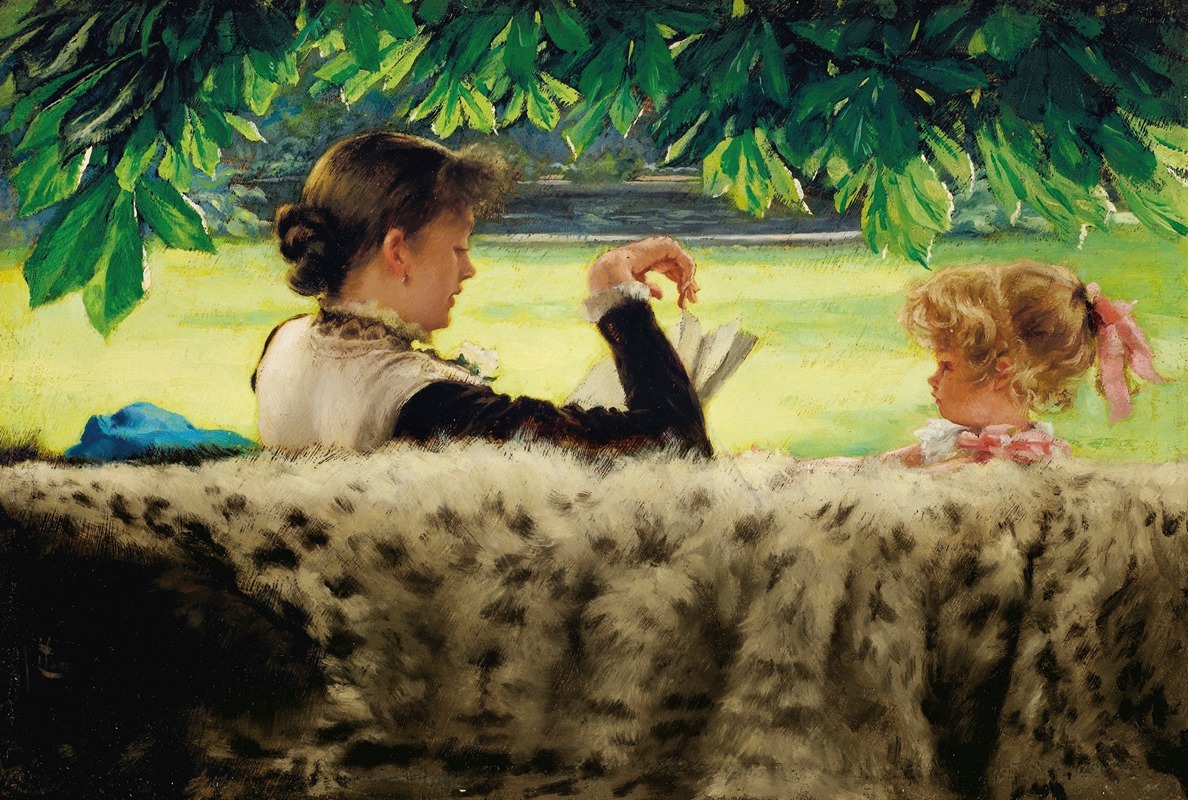
The Tale
A hand-painted replica of James Tissot’s masterpiece The Tale, meticulously crafted by professional artists to capture the true essence of the original. Each piece is created with museum-quality canvas and rare mineral pigments, carefully painted by experienced artists with delicate brushstrokes and rich, layered colors to perfectly recreate the texture of the original artwork. Unlike machine-printed reproductions, this hand-painted version brings the painting to life, infused with the artist’s emotions and skill in every stroke. Whether for personal collection or home decoration, it instantly elevates the artistic atmosphere of any space.
James Tissot's painting "The Tale" is a notable work by the French artist, who is renowned for his detailed and often narrative-driven compositions. Tissot, born Jacques Joseph Tissot in 1836 in Nantes, France, was a painter and illustrator who gained prominence in the latter half of the 19th century. He is best known for his depictions of contemporary life, particularly focusing on the fashion and social customs of the Victorian era.
"The Tale," created in the late 19th century, exemplifies Tissot's keen interest in storytelling through art. The painting captures a moment of social interaction, a common theme in Tissot's work, where he often explored the nuances of human relationships and the subtleties of social etiquette. His works are characterized by their meticulous attention to detail, vibrant colors, and the ability to convey a narrative through a single scene.
In "The Tale," Tissot employs his signature style to depict a group of elegantly dressed individuals engaged in conversation. The setting is likely a drawing room or a garden, typical of the environments Tissot favored for his scenes of social gatherings. The figures are portrayed with precise detail, from the intricate patterns of their clothing to the expressions on their faces, which suggest a range of emotions and interactions. This attention to detail not only highlights Tissot's technical skill but also his interest in the fashion and cultural norms of his time.
Tissot's work often reflects the influence of both French and English artistic traditions. After moving to London in 1871, he became associated with the Aesthetic Movement, which emphasized beauty and decorative art. His time in England also exposed him to the works of the Pre-Raphaelites, whose emphasis on realism and detail can be seen in Tissot's own paintings. "The Tale" embodies these influences, combining a realistic portrayal of its subjects with an aesthetic appreciation for the beauty of the scene.
Throughout his career, Tissot was known for his ability to capture the essence of his era, making his works valuable historical documents as well as artistic achievements. "The Tale" is no exception, offering insight into the social dynamics and cultural values of the late 19th century. The painting is a testament to Tissot's skill as a storyteller, using the medium of paint to weave narratives that resonate with viewers both in his time and today.
In summary, "The Tale" by James Tissot is a quintessential example of the artist's work, showcasing his talent for narrative art, his attention to detail, and his ability to capture the spirit of his age. Through this painting, Tissot invites viewers to step into a moment of Victorian life, offering a glimpse into the social customs and interactions of the period.






